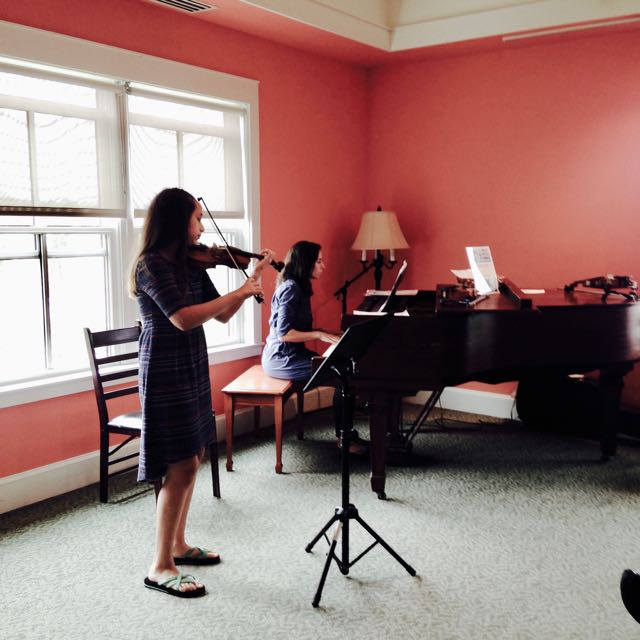During the early days of musical instrument practice, practice is about carving out time for practice and developing the discipline to practice. Incorporation of practice into the daily life of a family usually takes effort, not only by the student but by other members of the family. It is usually a struggle at first to add one more thing into the family schedule, especially as practice for a young person generally requires the support of one of the parents. The parent must also carve out time for the practice as well as the student.
Once time has been carved out for practice, usually the next struggle is for the parent to become the practice partner, helping the student practice. Generally Suzuki teachers model practice during the lessons. Listening to reference recordings is generally not part of the lesson, but is a priority of daily home practice. Listening to reference recordings generally occurs during other activities such as car trips and meal preparation. Below is the general structure for a practice session modeled during lessons.
- Tuning. Typically the parent or teacher tunes the student’s instrument. Tuning requires fine motor skills generally not possible by a very young child. When the student is able to tune, the task is transferred to the student.
- Review. Review of technique practiced during lesson through practice of review pieces. Typically lessons focus on one aspect of technique such as posture, bow hold, tone production, left hand position, intonnation, or precise finger placement.
- Scales and technique etudes.
- Learning new pieces.
- Sight-reading.
If time is limited, priorities are listening to reference recordings and review.
